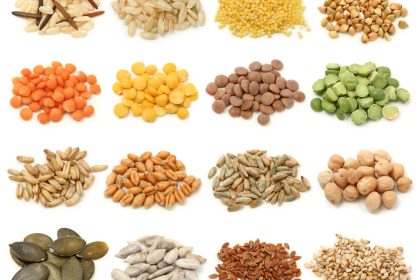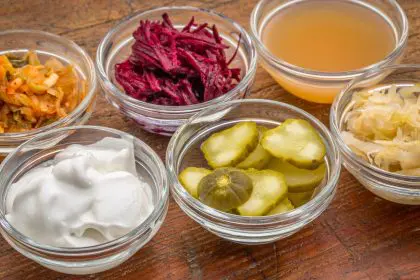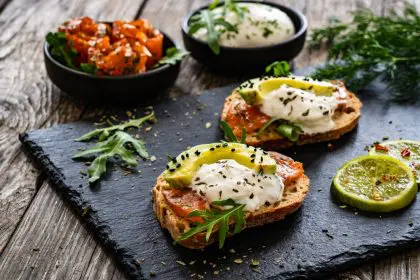The aroma of a bubbling casserole or freshly baked cookies can instantly transport us to cherished memories. Comfort foods nourish our souls, but they can also challenge our health goals. Yet, it’s possible to enjoy these beloved dishes without sacrificing flavor or nutrition. By thoughtfully modifying ingredients and cooking techniques, you can create healthier versions of your favorite comfort foods that still deliver the emotional satisfaction we crave.
Understanding comfort food psychology
The connection between food and emotion runs deep, influencing both our cravings and satisfaction levels. Comfort foods are often linked to fond memories, making them a source of emotional nourishment. This connection helps explain why comfort foods are so universally beloved, but it also presents a challenge when trying to eat healthily. Understanding this relationship allows us to develop alternatives that still offer the emotional comfort we desire while enhancing the nutritional value of these dishes. By rethinking the way we prepare these foods, we can indulge in the familiar flavors we love without compromising on health.
Reimagining classic comfort dishes
Transforming traditional comfort foods into healthier alternatives doesn’t mean giving up on flavor. By making a few strategic modifications, you can create versions that are just as satisfying. Consider these modifications for popular dishes:
Pasta classics
Swap heavy cheeses for creamy butternut squash in mac and cheese to offer rich texture without the extra calories. Whole wheat pasta provides added fiber, while vegetable sauces like tomato or pesto add depth of flavor. For a low-carb option, zucchini noodles pair beautifully with your favorite pasta toppings.
Hearty mains
Instead of deep-frying, bake chicken with a crunchy coating made from whole-grain breadcrumbs or crushed nuts. Choose lean turkey for meatloaf to reduce calories without sacrificing flavor, or boost the fiber and protein content of chili by incorporating beans.
Strategic ingredient swaps
By swapping ingredients, you can enhance the nutrition of your meals without compromising taste. Some effective substitutions include:
Dairy alternatives
Greek yogurt replaces sour cream, providing the same creamy texture with added protein and less fat. Cashew cream works well as a dairy-free alternative to heavy cream, while nutritional yeast imparts a cheesy flavor without the extra calories.
Grain upgrades
Quinoa is a great substitute for white rice, offering more protein and fiber. Whole wheat flour is a healthier alternative to all-purpose flour, adding fiber and a nuttier flavor. Cauliflower rice works well as a low-carb, nutrient-rich substitute for traditional rice.
Comfort food nutrition profiles
Understanding the nutritional benefits of your modified dishes can help motivate healthier choices. For example, consider mac and cheese:
Traditional mac and cheese
- Calories: 450 per cup
- Saturated fat: 12g
- Protein: 15g
Modified version
- Calories: 300 per cup
- Saturated fat: 4g
- Protein: 18g
By making simple tweaks, such as substituting butternut squash for cheese or using whole grain pasta, you can significantly reduce calories and fat while boosting protein content. The modified version still delivers the comfort and flavor you expect, but with a healthier nutritional profile.
Satisfying dessert alternatives
Desserts are often the hardest comfort foods to modify, but there are plenty of ways to create healthier sweet treats that still satisfy your cravings. Consider these options:
Fruit-based options
Apple-walnut spice cake swaps refined sugars for natural sweetness from apples and adds walnuts for healthy fats. Berry-topped whole grain pancakes use whole grain flour for added fiber and fresh berries for a sweet, antioxidant-rich treat. Baked cinnamon apples offer natural sweetness without the extra sugar.
Creamy treats
Chocolate chia pudding uses chia seeds to create a creamy texture while adding fiber and healthy fats. Frozen yogurt bark combines yogurt with your favorite fruits and nuts for a lighter, crunchier dessert. Avocado chocolate mousse provides a creamy texture with healthy fats to keep you satisfied.
Cooking techniques for health
The way you cook your meals can significantly impact their nutritional value. By using healthier cooking techniques, you can maintain flavor while reducing calories:
Baking methods
Air frying allows you to create crispy textures without excessive oil, steam-baking retains moisture and nutrients in dishes like casseroles, and roasting brings out the natural sweetness and depth of flavor in vegetables and meats.
Flavor enhancement
Fresh herbs, like basil or rosemary, can elevate the flavor of any dish without adding calories. Experimenting with spices like cumin, paprika, or turmeric can keep dishes interesting, while umami-rich ingredients like mushrooms or nutritional yeast can enhance the savory richness of your meals.
Meal planning strategies
To make healthier comfort foods a sustainable habit, planning and preparation are key. Batch cooking healthy grains, beans, or roasted vegetables in advance allows for quick meal assembly throughout the week. Freezer-friendly portions make it easy to store larger meals like soups or casseroles for later. Pre-portioned servings can help with portion control, and focusing on a balanced plate with half vegetables, a quarter lean protein, and a quarter healthy carbs can help maintain healthy eating habits.
Special dietary considerations
If you have dietary restrictions, comfort foods can still be adapted. For gluten-free options, try alternative flour blends or use naturally gluten-free ingredients like almond flour or rice flour. For plant-based choices, incorporate legumes or mushrooms in place of meat, and use nutritional yeast for a cheesy flavor.
By finding a balance between comfort and nutrition, you can create sustainable eating habits that satisfy both your emotional and physical needs. Focus on making gradual modifications that preserve the essence of your favorite dishes while enhancing their nutritional value, allowing you to enjoy comfort foods guilt-free.

















